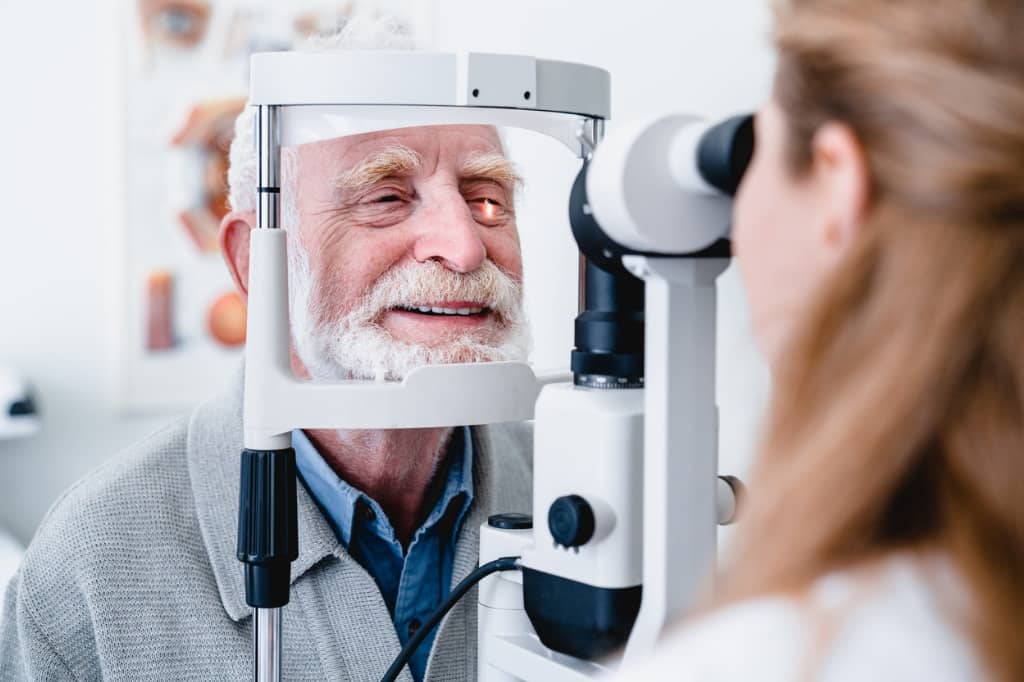How to Prevent Glaucoma from Progressing with Annual Eye Exams

January is Glaucoma Awareness Month. To celebrate, we at Cascade Eye & Skin Centers want to stress the important role regular eye exams play in the diagnosis and treatment of glaucoma. Glaucoma is a leading cause of vision loss, especially for those over the age of 60. However, early diagnosis and treatment are key ways to prevent glaucoma from progressing. Glaucoma is often asymptomatic, which is why it is sometimes referred to as the silent thief of sight.
What is Glaucoma and Its Risk Factors?
Glaucoma damages the optic nerve, which carries visual information from the eye to the brain. If the disease progresses, it may eventually lead to complete blindness once all of the optic nerve fibers have deteriorated.
Glaucoma is often caused by increased pressure inside the eye, but it may also be caused by other factors such as genetics, eye injuries, or certain medications. Other risk factors for the condition include:
- Being of African, Hispanic, or Asian heritage
- Having corneas that are thin in the center
- The thinning of the optic nerve
- Having diabetes or high blood pressure
- Being nearsighted
Types and Symptoms of Glaucoma
There are two main types of glaucoma: open-angle and narrow-angle. Although they both affect the optic nerve, they develop and progress differently. They also present varying symptoms and should be managed accordingly. In some cases, there may be no noticeable symptoms. However, an annual eye exam is the best way to diagnose and treat glaucoma.
Open-angle Glaucoma
Open-angle glaucoma is the most common type of glaucoma and occurs when the eye does not drain fluid as well as it should. This causes pressure to build up in the eye and damage the optic nerve. It usually begins with gradual peripheral vision loss and may progress to complete vision loss if left untreated. This type of glaucoma is often asymptomatic until it has advanced.
Narrow-angle Glaucoma
Narrow-angle glaucoma happens when the iris is too close to the drainage channel in the eye. This may cause the drainage channel to become blocked, leading to an increase in eye pressure. This form of glaucoma can happen suddenly and is often accompanied by symptoms such as:
- Severe eye pain
- Nausea and vomiting
- Red eyes
- Blurred vision
- Headache
- Seeing halos or rainbows
If you experience these symptoms, it’s crucial to seek medical attention immediately, as narrow-angle glaucoma is a medical emergency. Without prompt treatment, it may cause permanent vision loss.
What to Expect During an Eye Exam
Scheduling an annual eye exam is critical in preventing and slowing the progression of glaucoma. Through early treatment, you can help protect your vision and maintain healthy eyes for the long term.
A glaucoma test measures the pressure inside your eye. Your doctor may use a tonometer (a device that blows a puff of air onto the eye) or a tonopen (a device that touches the eye to measure pressure) to perform this test. To determine the cause of any increased pressure, your doctor may perform an ultrasound or imaging test to get a better view of the structures inside your eye.
An eye exam with Cascade Eye & Skin Centers typically begins with a review of your medical history and a discussion of any vision or eye-related concerns you may have. Your ophthalmologist or optometrist will then perform several tests to assess your eye health and vision. Other Common eye tests may include:
- Visual acuity test
- Eye muscle test
- Retinal examination
Schedule Your Annual Eye Exam With Cascade Eye & Skin Centers
At Cascade Eye & Skin Centers, we aim to provide comprehensive eye care with a personalized touch. We understand how important it is to detect and treat eye diseases such as glaucoma early, so we suggest that all of our patients get an annual comprehensive eye exam. Use this Glaucoma Awareness Month as a reminder to schedule your annual appointment and take control of your eye health. Schedule an appointment today and maximize your eye health.




